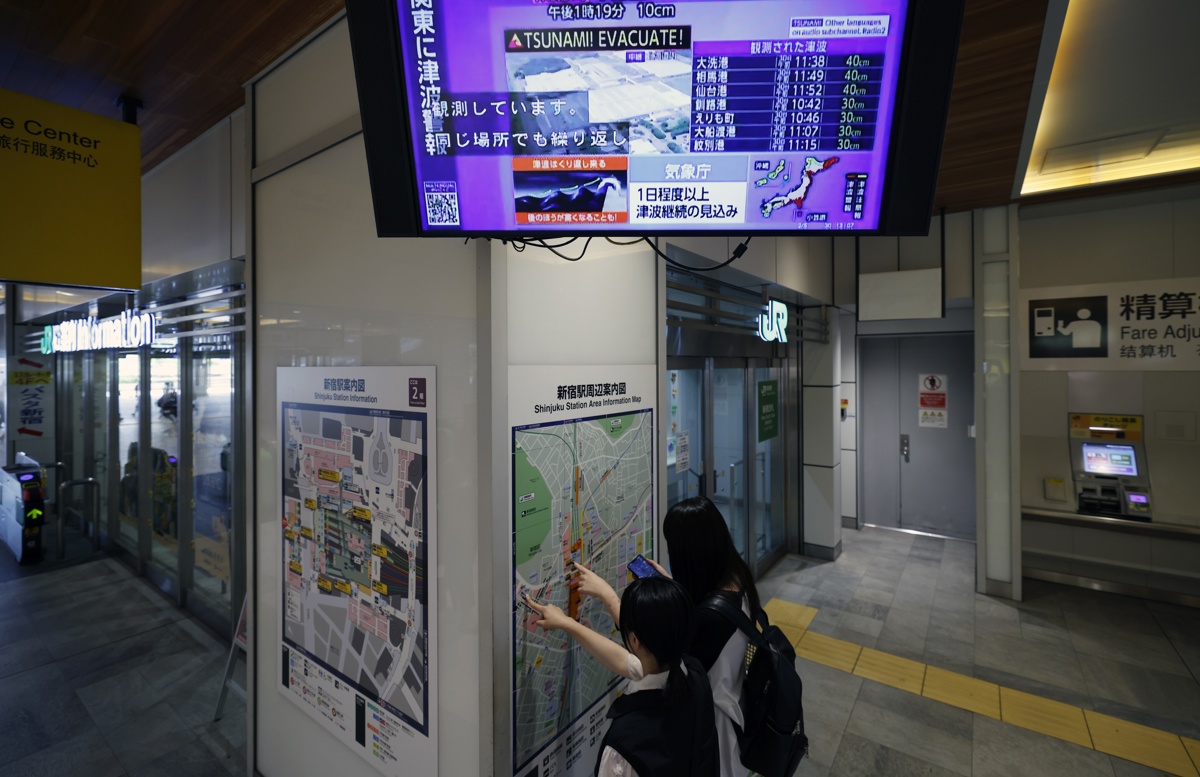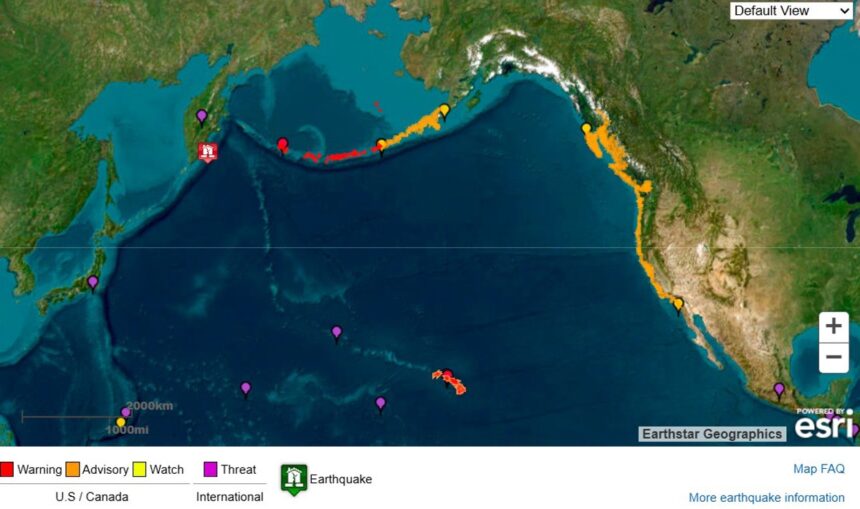A magnitude 8.8 earthquake, one of the strongest ever recorded, struck the Pacific Ocean off Russia’s Kamchatka Peninsula on July 29, 2025, triggering tsunami warnings in Hawaii, Alaska and along the west coast of the U.S. and Canada.
The National Oceanic and Atmospheric Administration (NOAA) and the National Weather Service (NWS) have issued a warning for Hawaii, while issuing an orange advisory for the U.S. West Coast, including California, Oregon, Washington and British Columbia.
First waves and evaluation

The first waves reached Hawaii after 7:00 p.m. local time on Wednesday, July 30 (1:17 a.m. ET) and were fortunately moderate.
Governor Josh Green reported that waves of up to 5.7 feet (1.7 meters) above sea level were recorded on Maui in Kahului, while in Hilo they reached 4.9 feet (1.5 meters).
Despite the magnitude of the quake, no serious structural damage or deaths were reported in the US.
However, Green warned that this type of event can have multiple waves: “We still can’t rule out new arrivals for several hours”.
Reaction and official measures
Scenes from Honolulu, Hawaii as tsunami warning sirens go off and people watch below from high ground pic.twitter.com/pFVGhsJdyZ
– Kiira Turnbow (@kiiraturnbow) July 30, 2025
Emergency sirens and automated messages urged Hawaii residents and visitors to rise to higher ground or upper floors of buildings.
In Honolulu, schools were closed and precautionary evacuations were ordered in coastal areas.
On the West Coast and Alaska, a lower risk band was issued, but with warnings of dangerous currents in harbors, bays and marinas, even if projected waves did not exceed one foot in height.
In Crescent City, California, waves between 2.9 and 5.4 feet (0.9-1.6 meters) were anticipated and beaches were closed to avoid incidents.
The earthquake in Kamchatka

The earthquake occurred at about 11:24 a.m. EST, about 125 km off the coast of Petropavlovsk-Kamchatsky.
It was at a depth of only 18 km, which made it a high intensity tremor with a great capacity to generate tsunamis.
Several aftershocks are expected to be recorded, including some of magnitude 7.5 or higher.
Historically, earthquakes in the Kamchatka region have generated tsunamis that reached Hawaii in just 4-5 hours, as occurred in 1923 and 1952, causing waves of up to 8 meters in Kamchatka and significant waves in Hawaii.
Importance for the U.S. Hispanic community
Location at risk: Hispanic communities in Hawaii, Alaska and the West Coast should follow official alerts.
Primary hazard: strong currents can be deadly, even without significant flooding.
Useful precautions: move to higher ground, avoid beaches and marinas, and maintain official surveillance.
Responsiveness: Evacuations and flight cancellations show preparedness for real risks.
Practical recommendations
If you are in Hawaii or Alaska, obey evacuation orders and head for high ground.
On the west coast, avoid the water even in small waves: ocean currents can be deadly.
Consult official sources such as NOAA, NWS, state government guides or media such as USA Today or The Guardian for reliable updates.
Authorities continue to monitor the situation while assessing possible aftershocks, persistent currents and the danger of secondary flooding.
On the West Coast and Alaska, a lower risk band was issued, but with warnings of dangerous currents in harbors, bays and marinas
QueOnnda.com














